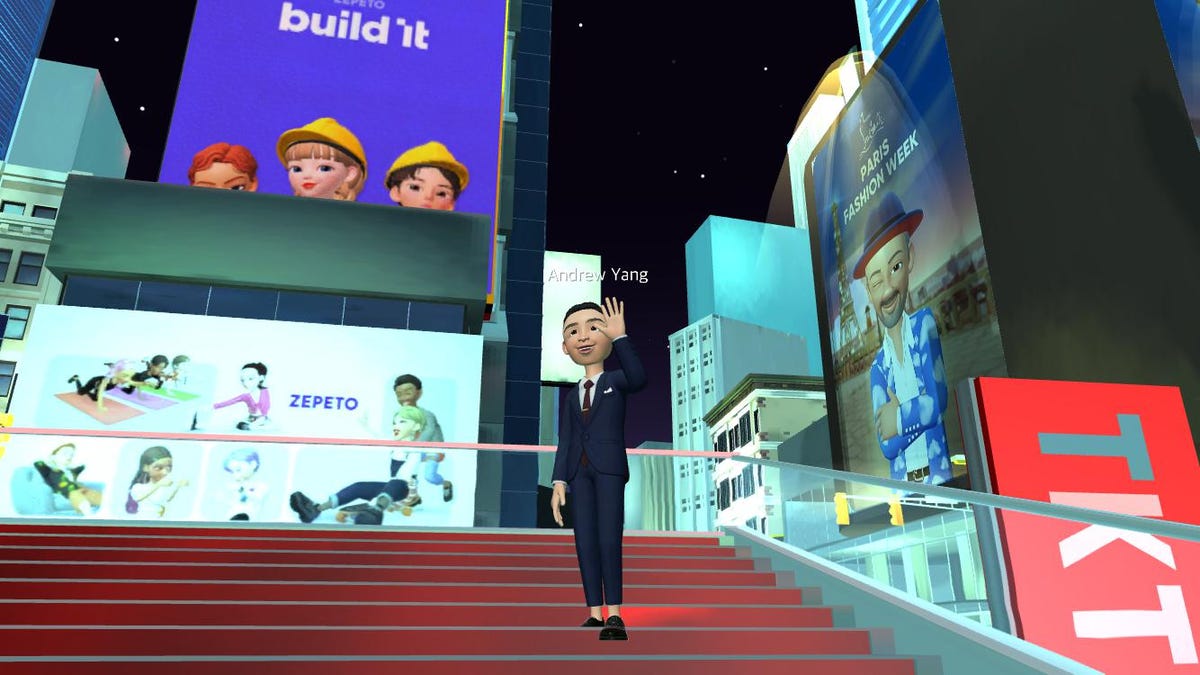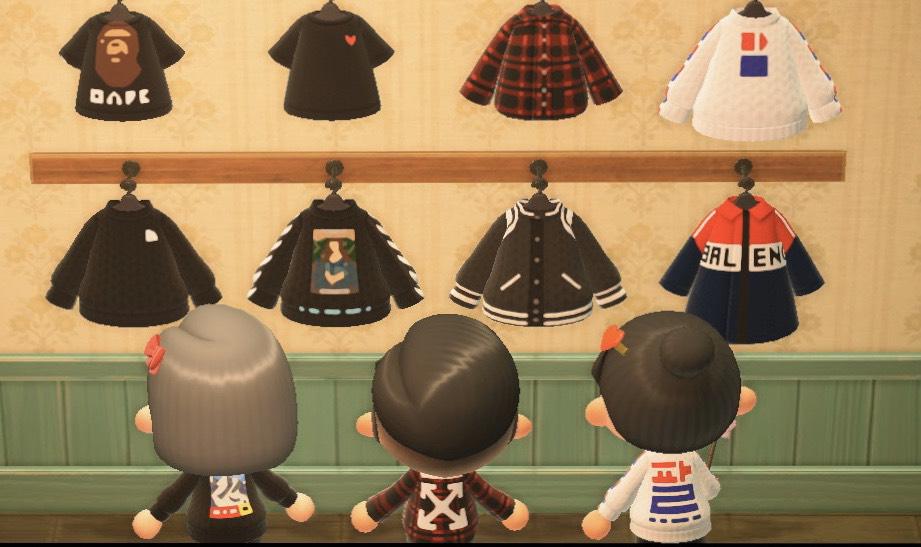Welcome to the Metaverse
Please mind the gap, between URL and IRL

Welcome to the Metaverse
5 min read
Business landscape
Words by Nicole Wong
The concept of “metaverse” is still an abstract and unfamiliar world to most, but definitely something we need to start trying to understand and follow. It’s not a game, not a product nor is it a virtual world that is created by one company.
The metaverse is a virtual world that encompasses many different technologies that we are already familiar with: such as virtual and augmented reality, cryptocurrencies, email, live streaming, social media, immersive video games or even video conferences.
Multiplayer online games have been around for a long time, but games like Fortnite, Roblox and Minecraft gained momentum during the pandemic, catalyzing the concept of the metaverse. All of these games created an expansive virtual world where people could interact with each other and create their own worlds – metaverses. During the pandemic, Animal Crossing became extremely popular because it not only provided a space for users to interact with their friends virtually, but also allowed users to express their creativity in the virtual space, as we’ve covered in one of our previous articles “Staying Connected in Strange Times”. The division between gaming and social platforms are getting blurrier and blurrier. Gamers had always been stereotyped as antisocial, but look how the tables have turned – gaming is now the new social networking. As game designers noticed that people are increasingly finding new ways to meet and socialise with friends, they’re increasingly creating social environments within the games to encourage collaboration, conversation and connections in the real life that develops beyond the game itself.
The term “metaverse” was originally coined in 1992 in Snow Crash, a dystopian sci-fi novel where the main protagonist makes a living as a pizza delivery man, and finds a virtual alternate universe to escape from reality. The story draws parallels with the acceleration of interest in the metaverse during the pandemic. As people were not able to socialize in person, they turned to virtual spaces in hopes of replicating social interactions to alleviate sensations of claustrophobia brought on by the uncertainty of a COVID pandemic world. This virtual space adds an extra dimension to the internet, where users can walk around, interact with the environment and with each other as digital avatars. Marketing in the virtual space quickly emerged as an innovative solution for brands trying to reach the customers whilst the world was social distancing.

For the mayoral race Andrew Yang created an avatar to campaign to younger voters in the metaverse.
Beyond virtual socialization, the metaverse empowers people to express themselves freely. Users have the ability to constantly customize their avatars through buying and changing between different skins, virtual add-on assets or even virtual fashion items to create their ‘ideal’ digital persona.The virtual aspect of it allows them to have the freedom to experiment, whether they want to create a digital persona that reflects their real life persona, or create a completely different one – enabling them to express themselves however they want to. In the metaverse, “people are not passive consumers, but creative agents crafting their self expression through curating their virtual identity”. Therefore, it’s no surprise that Gen Zs and Alphas spend so much time in the metaverse.
The recent hype around metaverse is similar to the introduction of social media in the early 2000s, where brands dismissed it as a fad, that a presence on social media would not be necessary until it became something so prevalent that it was impossible to ignore. The metaverse has proven itself to be more than a buzzword; a trend that’s here to stay. Whilst millennials spend their days scrolling through Instagram, Gen Zs and Gen Alphas are hanging out in virtual spaces and experiences with their friends. Brands must start wrapping their heads around virtual spaces and start experimenting or they’ll be at risk of falling behind.
The first handful of “brave” brands who have experimented with the metaverse all involved importing products from the real world into the virtual space through brand partnerships. For example, fashion brands like Valentino and Marc Jacobs digitised their latest designs on Animal Crossing for users to dress their characters in. However, these brand awareness tactics will soon no longer be enough. Brands that want to keep up with the ever-changing environment must consider their role in the virtual space and think beyond simply copying and pasting its brand and experiences for multiple reasons. Firstly, in the metaverse the possibilities are endless; it allows brands, users and creators to “recreate” themselves with no limitations of the real world. Secondly, given Gen Z and Gen Alphas’ growing presence on the metaverse, it’s only a matter of time until this becomes the first point of discovery for new brands for the audience. So brands should grind their creative juices to think of virtual-first products to catch their attention. Red Bull can sell rockets or Uber can provide teleporting service in the virtual world.
With today’s customers valuing physical brand experience as much as digital brand experiences, the metaverse is posing as an opportunity to bridge the two together. Innovative companies are starting to create virtual branded playgrounds and experiences to allow fans to socialize, interact and shop in immersive environments. A few weeks ago, Vans announced its “Vans World” an interactive Vans skateboarding metaverse playground in Roblox for its fans, featuring some of the brand’s physical locations such as House of Vans in London. Users will be able to customize, purchase and wear exclusive products in the experience. The immersive experience brings the culture of skateboarding, fashion and the brand community together digitally. Vans has always been a global icon rooted in youth culture – its venture into metaverse further solidifies this identity for the brand.
Luxury houses are also trying to win the hearts and minds of the next generation. For Gucci’s 1005th anniversary they hosted an experiential exhibition “Gucci Garden” in Florence and replicated a version of it in Roblox for those who wanted to participate virtually. At the virtual event, guests were free to wander through different rooms, socialize with other guests, view, try on and even purchase digital Gucci items, many of which were also for sale at the physical event. During the one week event, over 1million items were sold at relatively accessible prices – ranging from a few dollars to a few hundred dollars, more justifiable price points than their collection in the real world. That being said, as soon as the event ended, the value and demand of virtual items soared with resale prices skyrocketing. A handbag that was sold at the event for $5 was resold for $4000; a price higher than the physical product. This shows that people are as willing to spend as much, and in some cases more, in the virtual world on digital assets as the physical world in order to express their individuality, and brands would be foolish to miss the opportunity.
The metaverse has proven itself to be more than a buzzword; a trend that’s here to stay. Whilst millennials spend their days scrolling through Instagram, Gen Zs and Gen Alphas are hanging out in virtual spaces and experiences with their friends.
In an attempt to close the gap between the physical and digital worlds, Boston Protocol is building a virtual shopping mall on Decentraland, an Ethereum-based virtual world where customers can buy fashion NFT which they can then go to the physical store to redeem the physical versions of the same shirt, shoe or bag. “Metaverse enthusiasts believe that instead of putting walls on our homes, we’ll put NFTs in our virtual Zoom backgrounds. Instead of buying new clothes, we’ll splurge on premium skins for our avatars.”
However, the one limitation that the metaverse has is interoperability. Currently, the metaverse is divided by different virtual platforms where users can roam freely between, but their virtual assets and digital avatars are not transferable between platforms. For example, you can build something on Roblox, but you won’t be able to move it into Fortnite or Decentraland. Each platform is like a different ‘metaverse’ on its own and as such, a brand’s presence on one platform will only exist on that platform. But at this rate of development, it is only a matter of time before interoperability will no longer be an issue as many companies are racing to solve it. By then, “users won’t need to have separate Twitter profiles, Fortnite characters and Reddit accounts — they’ll simply be themselves across all channels. This continuity of identity will be a core factor behind how users purchase and consume content in the metaverse”.
Even though the metaverse has been developing at such a rapid pace, it’s still far from mature. It’s certainly not too late for brands to venture into the virtual sphere and stay on top of the development and evolvement of customer behavior in order to tap into exciting opportunities that are not possible in the physical world.
Next
You’ve Got Mail
August, 2021.



